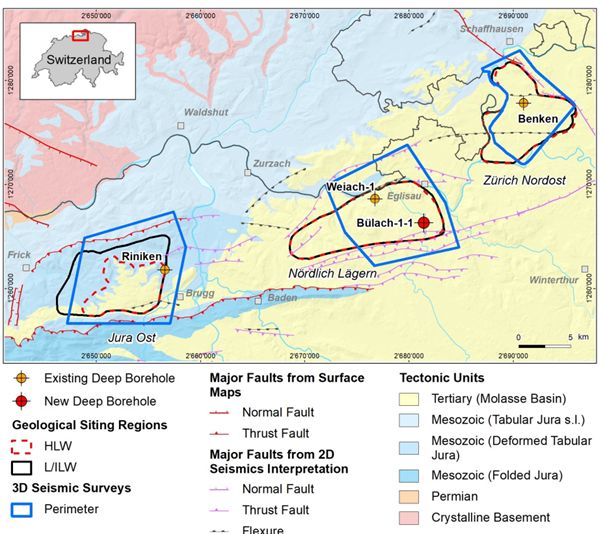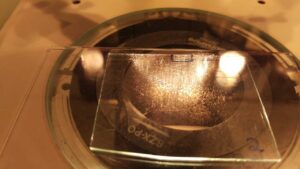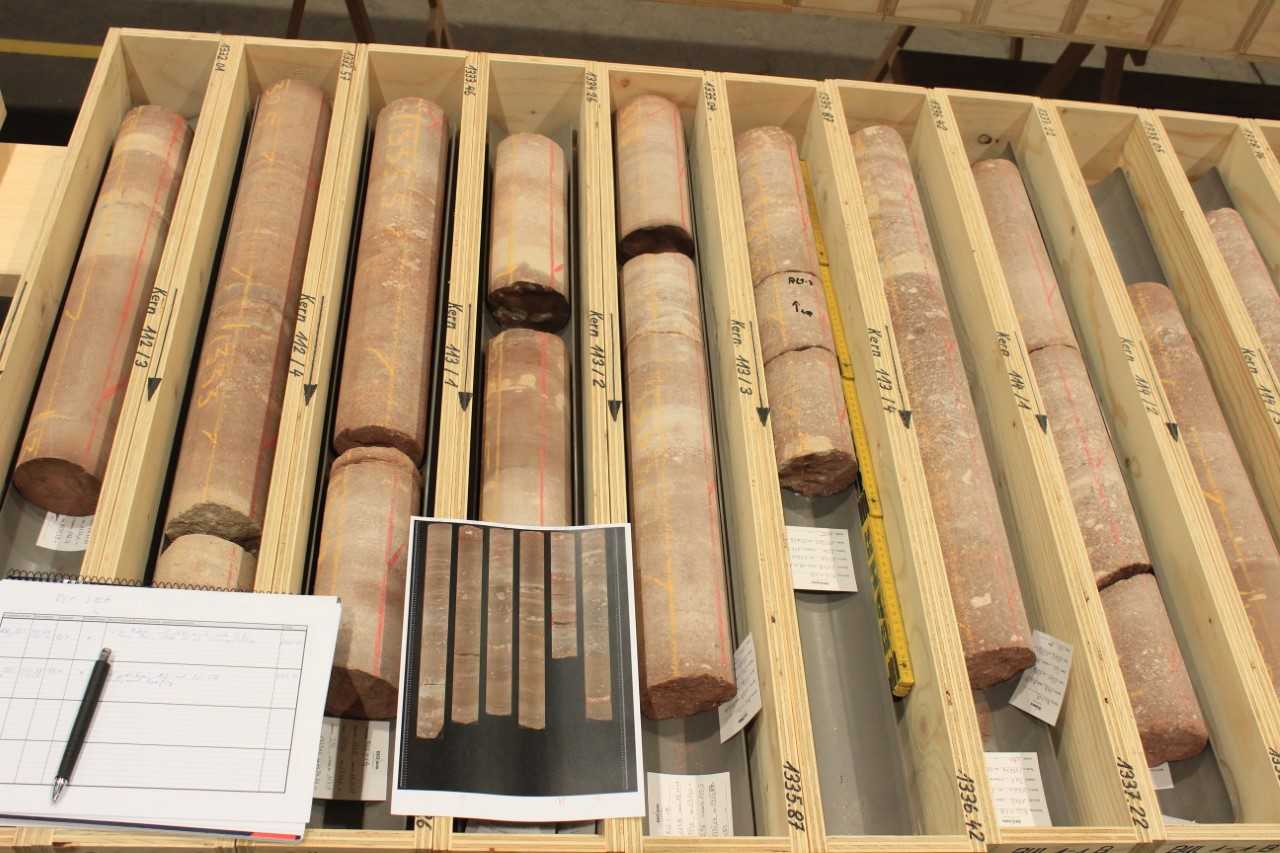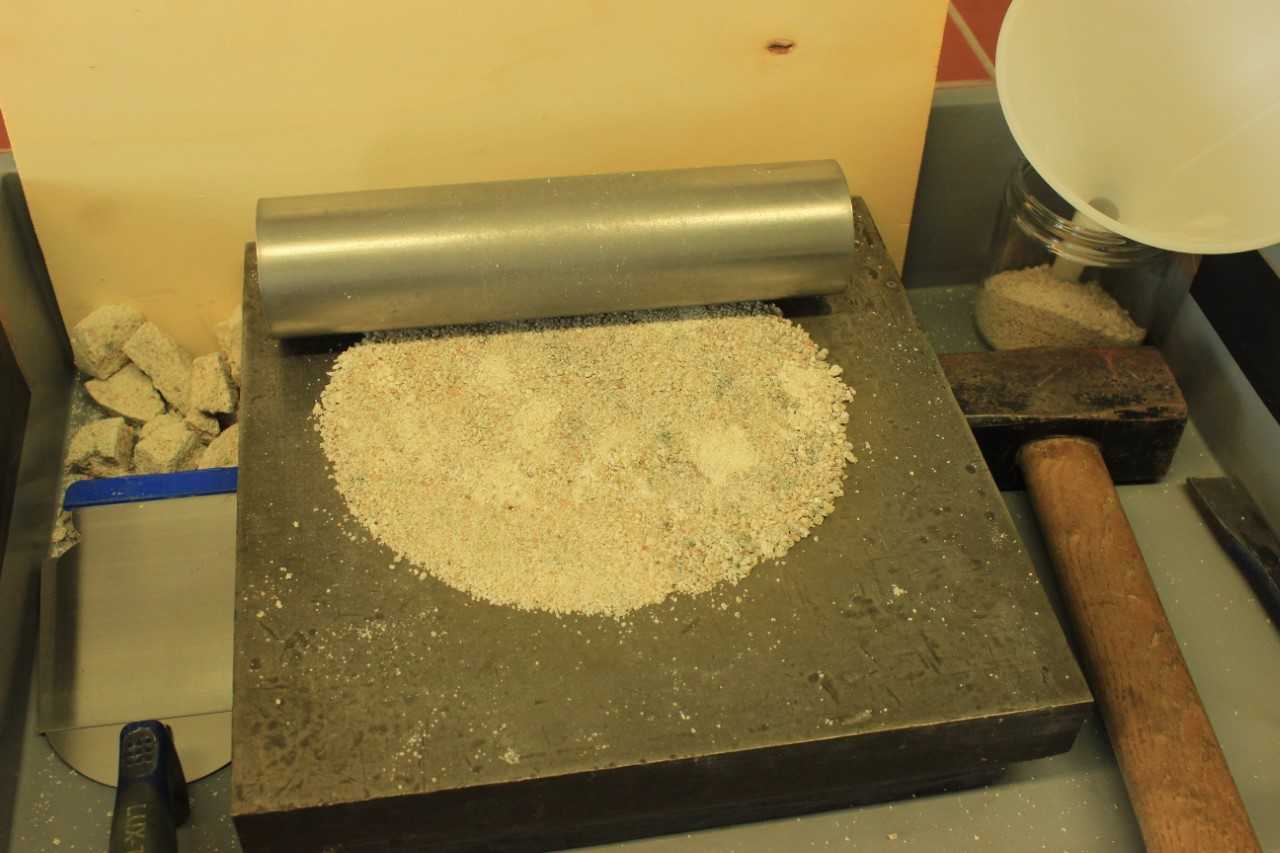SANDS – Single Grain Age Distribution in Thermochronological Samples
PIs Kevin Frings, Christoph v.Hagke
Understanding of long-term exhumation rates is of great importance for many geological applications, such as understanding rise and decay of mountain ranges and evaluating geological hazards related to erosion events. One key application is ensuring the long-term safety of radioactive waste disposal sites.
We use apatite-helium thermochronology to estimate the long-term exhumation rates in the northern Swiss Molasse Basin, where the site candidates for the Swiss nuclear waste repository are located. The 1370 m deep exploration well Bülach-1, recently drilled by the Swiss National Cooperative for Radioactive Waste Disposal (NAGRA), offered the opportunity for extensive sampling. The well reaches from Miocene Molasse deposits, through the potential target horizon for nuclear waste disposal (the Jurassic Opalinus Clay) into the underlying Triassic Buntsandstein and Permian Rotliegend units.
Apatite-helium thermochronology classically uses three to five grains per sampling interval, of which a mean age can be calculated. In sedimentary basins, this approach may not be appropriate, as multiple single grain age populations may be present within one sample. A low number of grains cannot detect these different populations.
We use 45 grains from the top 500 meters of the well (Molasse) and more than 60 grains from the bottom-most sequences (Buntsandstein and Rotliegend). This amount of data allows us to statistically separate different populations and calculate separate time-temperature models with the ultimate goal to constrain the timing and amount of exhumation that occurred in the area. To understand the origin of the different single grain age populations better, we examine the sedimentary system of the Molasse sequences using 3-D seismic data, as well as surface and well data.
As an independent measure of exhumation, we analyse stylolites of carbonatic sequences of the borehole. By describing their geometry at high resolution and in 3-D, we determine dependencies of stylolite geometries and depth of stylolite formation. This can be realised using the self-similarity of the structures and statistical analysis of parameters such as wavelength and peak hight.
The raw data report for the Bülach-1 is available on NAGRA’s homepage:
https://www.nagra.ch/en/cat/publikationen/arbeitsberichte-nabs/nabs-2020-e/downloadcentre.htm

Fig. 1: geological map and NAGRA target regions of the Northern Swiss Molasse Basin (Nagra 2020: TBO Bülach-1-1: Data Report (Dossier I-X). Nagra, Wettingen)
Pictures from the work process:







